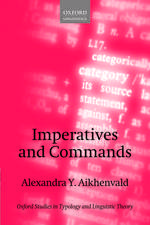Traditions in Architecture: Africa, America, Asia, and Oceania
Autor Dora P. Crouch, June G. Johnsonen Limba Engleză Paperback – sep 2000
is arranged thematically to show the basic commonalties of all human communities. In order to provide a basic understanding of the cultural heritage defining these diverse groups, both vernacular and monumental works are discussed. The book is divided into five major sections, each of which
addresses specific topics fundamental to all societies. The authors discuss these topics in terms of particular architectural solutions, comparing and contrasting geographically separated buildings and construction traditions. For example, the issue of architectural meaning is studied through
symbolic gardens in China, verbal ornament in the Islamic world, and the wall paintings of Ndebele women of southeast Africa. Beginning with an investigation into the ways in which the continuity of traditional forms is maintained, the authors then explore practical issues such as housing and food
structures, climate and ecology, building materials, and architectural forms and methods. Architectural goals and purposes, which determine what is built, vary from culture to culture and are given special attention. Planning and design-ways in which space is used in patterns of organization-range
from urban plans to landscaped settings. The authors conclude with an examination of cultural values, investigating the way in which architecture interacts with social relations, traditional theories, decision-making, and the economics of building. The book is enhanced by over 200 photographs, maps,
and charts, as well as a glossary and full bibliography. This unique study will enlighten students and open new avenues of research for scholars.
Preț: 1190.53 lei
Preț vechi: 1630.86 lei
-27% Nou
Puncte Express: 1786
Preț estimativ în valută:
227.80€ • 238.49$ • 188.50£
227.80€ • 238.49$ • 188.50£
Carte tipărită la comandă
Livrare economică 07-21 aprilie
Preluare comenzi: 021 569.72.76
Specificații
ISBN-13: 9780195088915
ISBN-10: 0195088913
Pagini: 448
Ilustrații: numerous halftones and line illustrations, maps
Dimensiuni: 216 x 253 x 22 mm
Greutate: 0.93 kg
Editura: OXFORD UNIV PR
Locul publicării:New York, United States
ISBN-10: 0195088913
Pagini: 448
Ilustrații: numerous halftones and line illustrations, maps
Dimensiuni: 216 x 253 x 22 mm
Greutate: 0.93 kg
Editura: OXFORD UNIV PR
Locul publicării:New York, United States
Descriere
This book introduces students, professionals and the general public to the architectural achievements of diverse cultures outside the Euro-American tradition. Rather than concentrating on geographic or chronological categories, however, the authors have arranged their subject matter thematically in order to focus on the basic needs common to all human communities. The book is divided into five major sections, each of which deals with vernacular as well as momumental structures. These five topics are discussed in terms of particular architectural solutions, comparing and contrasting geographically separated buildings and construction traditions. For example, the issue of architectural meaning is studied through symbolic gardens in China, verbal ornament in the Islamic world, and the wall paintings of Ndebele women of southeast Africa. Theoretical issuesrelated to particular building traditions are illuminated by these juxtapositions. Traditions in Architecture begins with an investigation into the ways in which the continuity of traditional forms is maintained. Next, the authors explore practical issues such as housing and food structures, climate and ecology, building materials, and architectural forms and methods. Architectural goals and purposes, which determine what is built, vary from culture to culture and are given special attention. Planning and design — ways in which space is used in patterns oforganization — constitute a discussion ranging from urban plans to landscaped settings. The text concludes with an examination of cultural values, investigating the interaction between architecture and social relations, traditional theories, decision-making, and the economics of building.


















